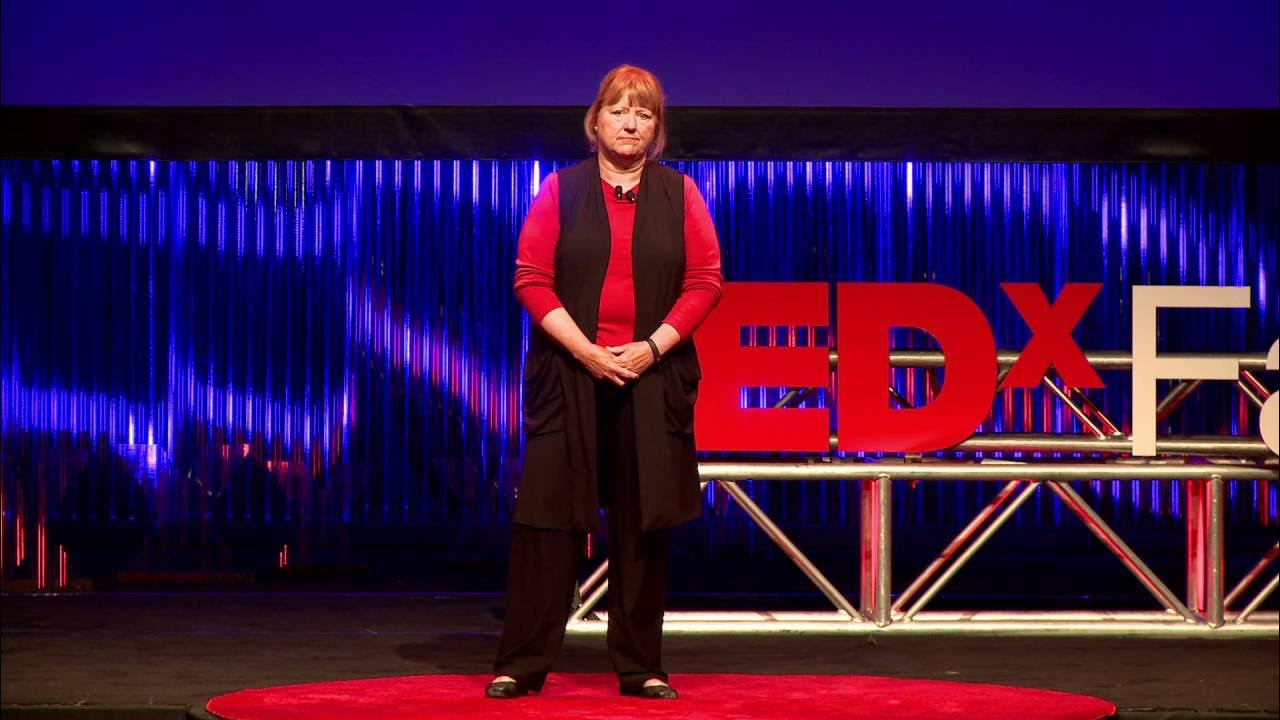To stop abuse, we first need to understand grooming | Grace Tame | TEDxSydney
TLDRThe video script discusses the insidious nature of child sexual abuse, emphasizing the often invisible and psychological aspects that are more difficult to prove and prosecute. It delves into the process of grooming, a method used by predators to manipulate and condition their victims to accept abuse. The speaker shares their personal experience of being groomed and abused, highlighting the six stages of grooming and its long-lasting effects. The narrative underscores the importance of understanding and recognizing grooming to prevent child sexual abuse, advocating for societal change and the empowerment of survivors. It calls for collective action to protect children and create a future free from such abuse, stressing the power of truth and the responsibility of the community.
Takeaways
- 📢 The media often focuses on the physical aspects of child sexual abuse, but the psychological manipulation and grooming process is equally, if not more, significant and damaging.
- 🔍 Grooming is a methodical process used by predators to prepare their victims for abuse, which is often invisible and difficult for children to explain or prove.
- 🌐 Grooming is a global issue and is not just limited to child predators; it can be employed by anyone in a position of power to control and manipulate others.
- 📉 The psychological impact of grooming can last a lifetime and is deeply rooted in the victim's developing brain, affecting their judgment and impulse control.
- 👥 The six stages of grooming include targeting, gaining trust, filling a need, isolating the victim, sexualizing the child, and maintaining control through a cycle of abuse and relief.
- 🧐 Recognizing the signs of grooming can be challenging as it often doesn't make logical sense to outsiders and can be mistaken for a close relationship.
- 🤔 The complexity of grooming makes it difficult to criminalize and prosecute, highlighting the need for a deeper societal understanding of the issue.
- 👮♀️ Reporting abuse to authorities is crucial but it's also important for the victim to understand the psychological manipulation they've undergone.
- 👨👧👦 The community plays a vital role in preventing abuse by creating an environment where grooming is not tolerated and where survivors are supported.
- 🌟 Survivors have the power to break the cycle of abuse by transforming their fear and anger into courage and conviction, leading to hope and action.
- 📚 Education and awareness about grooming are essential to empower individuals and communities to recognize and prevent child sexual abuse.
Q & A
What is the primary focus of media reports on child sexual abuse cases?
-The primary focus is usually on the graphic, physical details of the abuse, such as accounts of rape and molestation.
Why is child sexual abuse often hard for a child to explain or prove?
-Most child sexual abuse is invisible, immeasurable, and untraceable, making it difficult for children to explain or prove, and easy for perpetrators to deny.
What is grooming in the context of child sexual abuse?
-Grooming is the insidious process by which predators prepare and condition their victims to accept abuse without realizing it.
Why is grooming rarely discussed in mainstream media or everyday conversations?
-Grooming is not often the focus because it is a less visible part of the crime and is more difficult to criminalize.
What are the six core concurrent phases of grooming as described in the script?
-The six phases are: 1) Targeting a vulnerable individual, 2) Gaining trust, 3) Filling a need, 4) Isolating the victim, 5) Sexualizing the victim, and 6) Maintaining control.
Why is it crucial to understand grooming as a society?
-Understanding grooming is crucial because it is a cornerstone of all corruption and abuse of power, and recognizing it can help prevent child sexual abuse.
What role does the pre-frontal cortex play in the vulnerability of children?
-The pre-frontal cortex, responsible for impulse control and judgment, is one of the slowest developing regions of the brain, not fully developed until at least age 24, making children more vulnerable.
How does the grooming process affect the victim's relationships with their genuine supporters?
-The grooming process involves isolating the victim by driving wedges between them and their genuine supporters, discrediting and discouraging contact with others.
What is Stockholm Syndrome and how does it relate to child sexual abuse?
-Stockholm Syndrome is a psychological response where a victim develops a bond with their abuser due to dependency. In child sexual abuse, it can manifest as the child adapting to the abuse and appearing not to want to leave the abusive situation.
What was the speaker's personal turning point that led to reporting the abuse?
-The speaker's turning point was a surge of rage that surpassed fear and transformed into courage, driven by the knowledge of the abuser's other victims and the potential for further harm.
What is the speaker's belief regarding the power of collective action in ending child sexual abuse?
-The speaker believes that if everyone commits to doing their part, we could end abuse and grooming within a generation by engaging in conversations, listening, and learning.
Outlines
😔 The Invisible Nature of Child Sexual Abuse
The first paragraph emphasizes the often overlooked psychological aspects of child sexual abuse, contrasting the media's focus on physical abuse with the reality that most abuse is subtle and psychological. It introduces the concept of grooming, a method used by predators to prepare children for abuse, which is difficult for victims to explain or prove. The speaker shares their personal experience of reporting abuse at a young age and the challenges of understanding the psychological manipulation they endured.
🧐 Identifying Vulnerability and Gaining Trust
The second paragraph delves into the first two phases of grooming: targeting and gaining trust. It discusses how predators identify vulnerable individuals, such as children, and gain their trust by feigning concern and offering help. The speaker's personal story illustrates how their abuser exploited their vulnerabilities, including a history of abuse and an unstable home life, to establish a connection and manipulate them.
😶 Filling the Gap and Isolating the Victim
The third paragraph continues the grooming process narrative by detailing the third and fourth phases: filling a need and isolating the victim. It explains how predators fill emotional gaps in the victim's support network and then work to isolate the victim from their genuine supporters. The speaker describes how their abuser played the role of a sympathizer and gradually drove a wedge between them and their family and friends.
😨 Sexualizing the Victim and Maintaining Control
The fourth paragraph covers the fifth and sixth phases of grooming: sexualizing the victim and maintaining control. It describes how predators normalize sex to lessen the shock when physical abuse begins and how they maintain control through a cycle of pain and relief. The speaker shares how their abuser used their past trauma and eating disorder against them to maintain power and control.
🤯 The Stockholm Syndrome and Breaking the Cycle
The fifth paragraph discusses the psychological phenomenon known as Stockholm syndrome, where victims may begin to depend on their abusers and even initiate contact with them. It also tells the story of the speaker's journey to break free from the cycle of abuse, fueled by rage and fear, which eventually transformed into courage and conviction. The paragraph concludes with a message of hope and the collective power of society to prevent abuse.
Mindmap
Keywords
💡Child Sexual Abuse
💡Grooming
💡Psychological Manipulation
💡Predator
💡Vulnerability
💡Stockholm Syndrome
💡Trauma
💡Gaslighting
💡Cognitive Dissonance
💡Survivor
💡Whistleblower
Highlights
The focus on child sexual abuse cases often overlooks the psychological manipulation and long-term impact, emphasizing only the physical aspects.
Child sexual abuse is predominantly invisible and difficult for children to explain or prove, making it easy for perpetrators to deny.
Grooming is identified as a key yet under-discussed component of child sexual abuse, involving psychological control and manipulation.
The speaker's mission is to bring the psychological aspects of child sexual abuse to the forefront of societal awareness.
Grooming is a global issue that extends beyond child predators to power holders in various environments.
The speaker reported their abuse at 16, highlighting the challenges of recognizing psychological manipulation at a young age.
Grooming can be simplified into six core phases, providing a framework to understand the process of abuse.
The first phase of grooming is targeting, where predators identify vulnerable individuals, often children.
The human brain is not fully developed until at least age 24, making children inherently vulnerable.
The speaker's personal vulnerability was exacerbated by health issues and a broken home environment.
Gaining trust is the second phase, where predators present themselves as friends and offer help to lull their targets.
The third phase involves filling a need in the target's emotional support network, further cementing the predator's role.
Isolation is the fourth phase, where perpetrators drive a wedge between the target and their genuine supporters.
Sexualizing is the fifth phase, where children are gradually exposed to explicit material to normalize sex.
The sixth and final phase is maintaining control, where perpetrators balance causing pain with providing relief.
The speaker's experience with abuse and grooming led to a deep understanding of the psychological harm caused by perpetrators.
Survivors' experiences of grooming are diverse, but the feelings of fear, shame, and self-destruction are common.
The speaker emphasizes the importance of understanding grooming as a societal priority and listening to every survivor's story.
The transformation of rage and fear into courage and conviction was crucial for the speaker to report their abuse.
Police investigation revealed further evidence of the pedophile's crimes, including child abuse material and a 'trophy file'.
The speaker believes that societal change is possible through education, empowerment of survivors, and open conversations about grooming.
The community has the power to end abuse and grooming by committing to understanding and addressing the issue.
Transcripts
Browse More Related Video

It Happens Here: We Are All Responsible to Stop Child Sexual Abuse | Anna Frissell | TEDxFargo

You're going to be okay: healing from childhood trauma | Katy Pasquariello | TEDxYouth@AnnArbor

Recovering From Male Sexual Abuse: One Survivor's Story | Jamie Forbes | TEDxHartlandHill

Child Sexual Abuse: Facts & Myths - What You Need To Know To Keep All Children Safe

Psychological Abuse in Children: Signs and Resources

Giving Voice to Sibling Sexual Abuse | Jane Epstein | TEDxBocaRaton
5.0 / 5 (0 votes)
Thanks for rating: